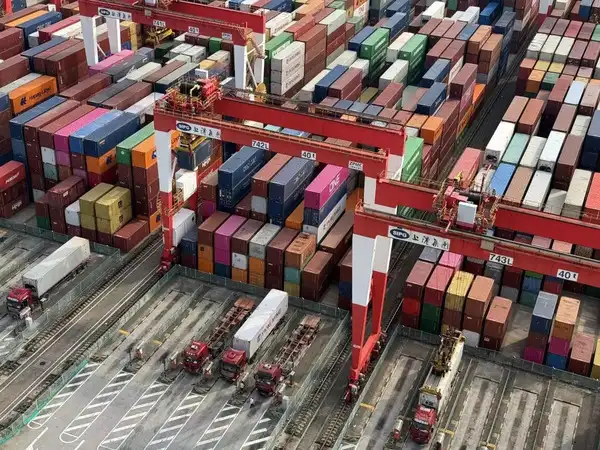UAE lifts tariffs Australia trade deal takes effect on October 1, ushering in a new era in Middle East–Australia relations. Under the $12.3 billion free trade agreement (FTA), more than 99 percent of Australian exports to the UAE will become tariff-free. This landmark move promises fresh export opportunities, stronger investment flows, and closer ties between the two nations.
In this article, we explore what the tariff removal means for both countries, which sectors will benefit, possible challenges, and how this deal could reshape trade patterns in the region.
What is the Agreement?
The deal is officially known as the Australia–UAE Comprehensive Economic Partnership Agreement (CEPA). It represents Australia’s first free trade agreement in the Middle East and includes more than just tariff cuts.

Key features include:
- Tariffs eliminated on more than 99 percent of Australian exports to the UAE by value.
- Many duties will drop to zero immediately, while others will be phased out over three to five years.
- Key exports like red meat, dairy, grains, horticulture, honey, and pulses will benefit.
- Industrial products such as aluminium oxide, vehicle parts, cosmetics, and manufactured items will see duties removed.
- The agreement also covers investment, services, digital trade, intellectual property, mobility of business persons, and government procurement.
- Certain tariffs, such as those on gold and pharmaceuticals, are locked at zero to prevent them being reintroduced.
This FTA is a landmark achievement and marks a new chapter in Australia’s trade policy.

Why is it Significant?
Strengthening Trade Ties
In 2024, total trade between Australia and the UAE was valued at around $12.3 billion. The UAE is already Australia’s largest trade and investment partner in the Middle East. By removing tariffs, Australia expects to increase exports to the UAE by hundreds of millions annually.
For Australian exporters, especially in agriculture and manufacturing, the agreement provides a competitive edge in a fast-growing market.
Gateway to the Middle East
The UAE is a major global logistics hub and serves as a gateway into the broader Gulf region. Australian leaders view this deal as a strategic entry point to other Middle East markets, enhancing Australia’s global trade footprint.
Boosting Investment Flows
Beyond trade in goods, the agreement encourages investment in sectors like clean energy, digital infrastructure, agriculture, and minerals. Australia also hopes to attract funding from UAE sovereign wealth funds and private investors.
The deal includes a chapter supporting opportunities for Indigenous Australian businesses, making it inclusive and forward-looking.
Domestic Economic Benefits
The government projects savings of millions for exporters in the first year alone by eliminating tariffs. Over time, these benefits could translate into more jobs, stronger regional development, and economic growth.
Consumers and businesses are also expected to benefit as import costs fall, easing price pressures.
What Changes Take Effect on October 1?
When the agreement enters into force, many tariff cuts will apply immediately.
Agriculture and Food
- Duties on red meat, dairy, pulses, honey, and horticultural goods will be removed.
- Tariffs on wine will be reduced and phased out further in coming years.
- Lower import costs will apply to grains, oilseeds, and seeds.
Industrial and Manufactured Goods
- Tariffs on aluminium, gold, vehicle parts, cosmetics, and pharmaceuticals will be lifted or locked at zero.
- Duties on jewellery and luxury items will also be removed or gradually phased out.
Services and Investment
- More than 120 service sub-sectors will benefit from improved market access.
- Provisions on e-commerce, digital trade, customs cooperation, and trade facilitation will take effect.
- Business visa mobility and easier intra-corporate transfers will be introduced.
Over the next three to five years, gradual tariff removal will continue for products requiring phase-out periods.
Benefits for Australia
Stronger Export Growth
Australian farmers and producers can now compete more effectively in the UAE. Tariffs that made Australian goods expensive will be removed, making them more attractive. Sectors such as meat, dairy, grains, and horticulture are expected to see strong demand.
Job Creation and Regional Development
Export growth often creates jobs across industries. From farming and manufacturing to logistics and shipping, the ripple effects of the deal will be felt across the economy. Regional Australia, where many agricultural businesses are located, stands to benefit significantly.
Diversifying Trade Partners
Australia has historically depended heavily on markets like China. This deal is part of a wider diversification strategy to reduce reliance on any single market. By strengthening ties with the UAE, Australia gains a secure foothold in the Middle East.
Attracting Capital and Investment
The provisions for investment are expected to attract more capital from the UAE into Australia. Potential projects include joint ventures in renewable energy, mining, and digital infrastructure.
Consumer and Business Cost Relief
Cheaper imports will reduce costs for businesses using these goods as inputs. This could also lower prices for Australian consumers in some sectors.
Benefits for the UAE

Access to Premium Goods
UAE consumers and businesses will gain easier access to premium Australian goods, ranging from meat and dairy to wine and specialty foods.
More Competitive Prices
With import duties removed, prices of Australian products in the UAE are expected to drop, making them more affordable.
Diversification of Supply Chains
The UAE has a strong interest in securing diverse supply chains. By strengthening trade with Australia, it reduces reliance on traditional partners.
Attraction of Knowledge and Partnerships
The closer ties may lead to more collaboration in areas such as education, health, clean energy, and infrastructure.
Challenges and Risks
Adjustment and Competition
Not all Australian businesses will benefit equally. Some smaller or less efficient producers may struggle to compete in the UAE market.
Non-Tariff Barriers
While tariffs are being removed, non-tariff measures such as regulations and standards may still cause friction in trade.
Labor and Ethical Concerns
Some critics have raised questions about labor rights in the UAE. Ensuring ethical and fair supply chains will be important for long-term sustainability.
Phased Removal
For products with gradual tariff reductions, the full benefits will take time to be realized.
Overreliance Risk
While the deal promotes diversification, overreliance on any one region carries risk. Australia will still need to pursue multiple trade partnerships worldwide.
Reactions from Leaders
Australian Prime Minister Anthony Albanese described the agreement as a major win, highlighting its potential to create jobs and open new export markets. Trade Minister Don Farrell emphasized that tariff removal on key exports like meat, dairy, minerals, and cosmetics will create high-paying jobs and opportunities for Australian businesses.
From the UAE side, officials have welcomed the deal as a long-term investment in cooperation and access to high-quality Australian products. Analysts also see strategic value in the agreement, as both nations seek to diversify beyond traditional industries.
What It Means for the Region
The Australia–UAE trade deal could inspire similar arrangements across the Middle East. Other Gulf states may follow, seeking stronger trade links with Australia. The agreement also positions Australia as a more integrated player in regional supply chains, competing more directly with exporters from Europe and North America.
Looking Ahead
The success of the agreement will depend on several factors:
- Growth in actual trade volumes over the next few years.
- Investment flows into sectors like renewable energy and digital infrastructure.
- Smooth implementation of customs and digital trade provisions.
- Business adaptation to new market opportunities.
- Expansion of similar deals with other countries in the Middle East.
Conclusion
The UAE lifts tariffs Australia trade deal marks a turning point in the economic relationship between the two nations. With more than 99 percent of Australian exports becoming duty-free, the $12.3 billion agreement opens doors to greater trade, stronger investment flows, and deeper regional integration.
Australia gains new opportunities to diversify its trade base, while the UAE strengthens its access to premium goods and supply security. The deal may not be free from challenges, but if managed well, it has the potential to become one of the most significant trade milestones for both countries in recent years.
Do follow UAE Stories on Instagram
Read Next – Careem UAE Car Rental Investment: Expanding Mobility Services















